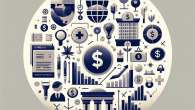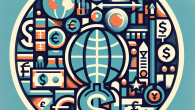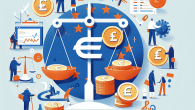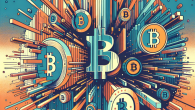Is Inflation Targeting Still Fit for Purpose in a Post-COVID World?
The Global Interest Rate Conundrum: Are We Entering a New Monetary Era?
After decades of monetary acrobatics—from ZIRP (Zero Interest Rate Policy) to QE (Quantitative Easing) and a variety of three-lettered monetary maneuvers—global interest rates are once again making headlines. But this time, it’s not because they’re plummeting; it’s because they’re… staying up. Economists, market watchers, and investors alike are collectively asking: Are we entering a new interest rate regime?
This exploration into the global interest rate landscape is not for the faint of heart or the economically uninspired. As always, put on your intellectual monocles and buckle your epistemological seatbelts. This is Dr. Alistair P. Whitmore guiding you through a complex web of monetary theory, historical context, and contemporary market dynamics—all explained with due gravity and just the right hint of ironic smirk.
Historically Low to Historically Puzzling: A Brief Monetary Timeline
If we glance back over the last four decades, it becomes immediately clear that interest rates have been on a rollercoaster ride with a downward inclination. Starting from the towering heights of the 1980s (when then-Fed Chair Paul Volcker chased inflation into submission with double-digit rates), we’ve slowly—but surely—descended into a world where 0.25% once felt “tight.”
Here’s a condensed historical tour:
- 1980s: Volcker fights inflation with rates over 15% in the U.S.
- 1990s: Global disinflation takes center stage + Japan introduces the world to sustained zero rates.
- 2008–2015: The Great Financial Crisis promotes QE and ZIRP.
- 2016–2020: Modest rate hikes, then COVID hits… back to zero we go.
- 2022–Present: Persistent inflation triggers aggressive tightening by major central banks.
Now in 2024, we find ourselves in a landscape where inflation persists, growth is sluggish, but interest rates are—remarkably—still elevated. This begs the pivotal question: Is this the beginning of a new monetary epoch?
The Underlying Drivers: Why Central Banks Might Keep Rates Higher
To understand the present, one must dissect the past—even if it’s still happening. Several structural shifts are contributing to the persistence of higher interest rates:
1. De-Globalization and Supply Chain Realignment
Years of free-flowing globalization contributed to lower inflation and interest rates. But recent movements—geopolitical fragmentation, reshoring of production, and supply chain resilience strategies—are leading to higher costs. And higher costs, dear reader, inevitably invite higher rates.
2. Demographic Pressures
The aging population dynamic in developed economies was once a deflationary force. But the wave of retirements, shrinking labor pools, and increased entitlement spending are now driving inflationary tendencies. Countries like Japan and Germany are at the vanguard of this demographic shift—with implications for yield curves worldwide.
3. Energy Transition Pressures
Shifting from fossil fuels to green energy is undeniably virtuous—but not without cost. Massive capital investment on a global scale is required, which feeds into higher fixed investment demand and, thus, upward pressures on rates.
4. Persistent Fiscal Deficits
Gone are the days of austerity chic. Governments, post-COVID, are more comfortable running large deficits. Whether it’s infrastructure in the U.S. or subsidies in Europe, sovereign debt levels are ballooning. Investors, rightly or wrongly, are demanding higher yields to shoulder the risk of lending to such spendthrift sovereigns.
What the Central Bankers Are (Really) Saying
Publicly, central bankers still cling to the language of “maintaining price stability” and “achieving target inflation.” But between the lines of speeches from the Federal Reserve, European Central Bank, and the Bank of England, a new tone emerges—one that suggests the age of ultra-low interest rates may be ending, and not just temporarily.
Notably, Jerome Powell’s 2023 Jackson Hole speech stressed the need to remain “vigilant” and to “maintain rates at a restrictive level” for “as long as necessary.” Lagarde similarly noted that Europe could be entering a “structural new normal.” Translation: Don’t expect a return to zero any time soon, folks.
Implications for Investors and Markets
The consequences of a new rate regime are profound, even existential, for market valuations, sector rotations, and portfolio strategies. Here’s what investors should be thinking about:
- Equity Multiples: With the risk-free rate higher, equity valuations (particularly tech) may be pressured. The once-reliable DCF (Discounted Cash Flow) math is no longer your friend.
- Fixed Income: Duration risk is back in fashion. Long-dated bonds have been ravaged—investors must tread carefully and rethink their duration exposure.
- Emerging Markets (EM): Higher global rates often spell doom for EM economies loaded with USD debt. Watch for defaults and capital flight risk.
- Real Assets: If inflation remains sticky, tangible assets like commodities and real estate may outperform.
Risks to Monitor: No Regime Shift Is Set in Stone
Of course, macroeconomic tectonics are never firm. Several scenarios could derail the current trajectory:
- A major financial crisis: Think derivatives gone wild or shadow banking implosions. Central banks may be forced to cut rates dramatically again.
- A sharp collapse in inflation: Perhaps AI, trade openness 2.0, or productivity miracles return. If so, the case for elevated rates weakens.
- Political regime changes: Populist uprisings or green revolutions could shift the rules of economic engagement entirely.
Conclusion: A New Era—or Just a Long Pause?
So, are we in a new regime of permanently higher rates? The evidence leans toward “yes,” but the academic in me must temper the conclusion. We are witnessing the early symptoms of a paradigm shift, but history shows us that monetary regimes don’t die overnight—they fade, mutating quietly until one day no one remembers the world before them.
For now, my dear readers, recognize the wind is shifting. Inflate your cognitive sails, and prepare for a monetary environment that no longer provides the easy money tailwinds of yesteryear. If rates are the price of money, perhaps it’s time we remembered that money should have a price.
As always, I invite you to ponder more by visiting our About Us page, or get in touch directly through our Contact page. Until next time—stay economically curious and monetarily skeptical.









Leave a Reply